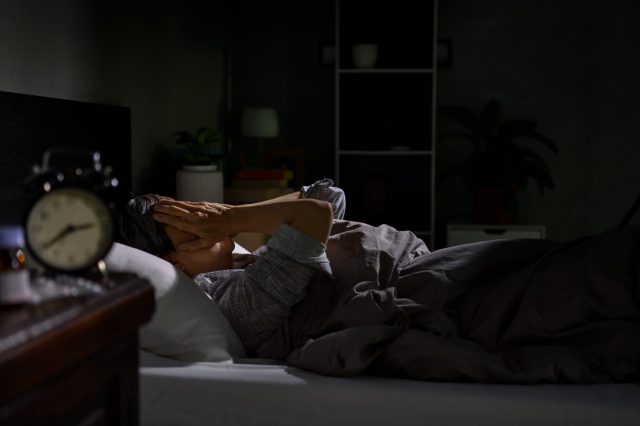In the complex realm of global health issues, sleep disorders significantly impact individuals’ physical, psychological, and well-being. Dr. Sushil Gupta, M.D., F.C.C.P., has extensive experience in tackling these conditions, with a background in private practice specializing in Pulmonary & Critical Care Medicine at Pulmonary Care PC, New Haven, CT, and as a key contributor to the management of the Sleep Disorders Center of Connecticut. His expertise includes serving as an attending physician in Pulmonary & Critical Care Medicine with the Cardiothoracic & Vascular group in New Haven, CT.
This overview from Sushil Gupta explores sleep disorders like insomnia, sleep apnea, restless legs syndrome (RLS), and narcolepsy, emphasizing symptoms, causes, and diagnostic methods. Leveraging the expertise of professionals like Sushil Gupta of Woodbridge ensures patients receive informed, personalized care for navigating sleep disorders. It’s vital to see this as a basic guide and consult healthcare experts like Sushil Gupta for personalized advice and diagnosis.
Insomnia: Beyond Counting Sheep
Insomnia is the most frequently encountered sleep disorder, affecting a wide demographic. Sushil Gupta explains that it is characterized by persistent trouble falling asleep, staying asleep, or experiencing non-restorative sleep despite having adequate sleep opportunities. This condition can lead to several daytime problems, including fatigue, mood disturbances, and decreased performance at work or school.
- Acute vs. Chronic Insomnia
Insomnia is categorized into acute and chronic forms. Acute insomnia, often triggered by life stresses, such as a job loss or the death of a loved one, usually resolves without treatment. Chronic insomnia, on the other hand, lasts for three months or longer and can be a primary disorder or secondary to other conditions, such as medical or psychiatric issues or substance abuse. - Symptoms and Diagnosis
Common symptoms include difficulty falling asleep, frequent awakenings, waking up too early, and relying on sleep medications. Diagnosing insomnia involves a detailed medical history, including a sleep diary and possibly a sleep study to exclude other sleep disorders.
Sleep Apnea: When Breathing Takes a Pause
Sleep apnea is a critical condition characterized by repeated pauses in breathing during sleep. Sushil Gupta of Woodbridge emphasizes that these pauses can last from a few seconds to minutes and may occur 30 times or more an hour. The most prevalent form, obstructive sleep apnea (OSA), involves a physical blockage of the airway, while central sleep apnea is related to the brain’s failure to signal the muscles to breathe.
- Symptoms and Diagnosis
The hallmark symptom of sleep apnea is excessive daytime sleepiness, regardless of spending sufficient time in bed. Other symptoms include loud snoring, observed episodes of stopped breathing, abrupt awakenings with gasping or choking, morning headaches, and concentration difficulties. Diagnosis typically requires a sleep study, where various physiological parameters are monitored overnight.
Restless Legs Syndrome: The Uncontrollable Urge
Restless Legs Syndrome (RLS) is a neurological disorder characterized by an irresistible urge to move the legs, usually due to unpleasant sensations. Sushil Gupta of Woodbridge explains that these sensations are often described as crawling, tingling, or throbbing and are more prevalent during periods of rest and in the evening.
- Symptoms and Diagnosis
RLS symptoms significantly disrupt sleep, leading to daytime fatigue and mood changes. The diagnosis of RLS is primarily clinical, based on patient history and the exclusion of other conditions with similar symptoms, such as peripheral neuropathy or iron deficiency anemia.
Narcolepsy: The Unpredictable Intrusion of Sleep
Narcolepsy is a chronic sleep disorder that causes overwhelming daytime drowsiness and sudden sleep attacks. Sushil Gupta explains that these episodes can occur at inappropriate times, such as while working, talking, or driving. Narcolepsy is divided into two types: Type 1, with cataplexy, and Type 2, without cataplexy.
- Symptoms and Diagnosis
Narcolepsy symptoms include excessive daytime sleepiness, cataplexy (a sudden, brief loss of muscle tone), sleep paralysis, and hallucinations at the onset of sleep. Diagnosis involves a thorough medical history, a sleep diary, and specific tests, such as the Multiple Sleep Latency Test (MSLT) and polysomnography, to measure the speed of falling asleep and the sleep cycle.
Diagnosing Sleep Disorders: A Comprehensive Approach
Sushil Gupta of Woodbridge explains that the diagnosis of sleep disorders is a meticulous process that involves:
- Medical and Sleep History: Detailed patient history to understand symptoms and their impact on daily life.
- Sleep Diary: A self-reported log to track sleep patterns over a period.
- Polysomnography: An overnight study that records brain waves, oxygen levels, heart rate, breathing, and movements.
- Multiple Sleep Latency Test (MSLT): Measures how quickly a person falls asleep in a quiet environment during the day, indicating the severity of sleepiness.
The spectrum of sleep disorders encompasses a range of conditions that significantly affect individuals’ health and quality of life. Understanding these disorders is crucial for early recognition, accurate diagnosis, and effective management. Sushil Gupta of Woodbridge emphasizes that given the complexity of these conditions, professional consultation is essential for appropriate treatment planning. If sleep disturbances are impacting your life, reaching out to a healthcare provider is a vital step toward regaining restful sleep and improving your overall well-being.






